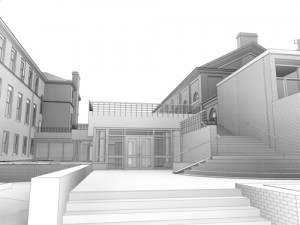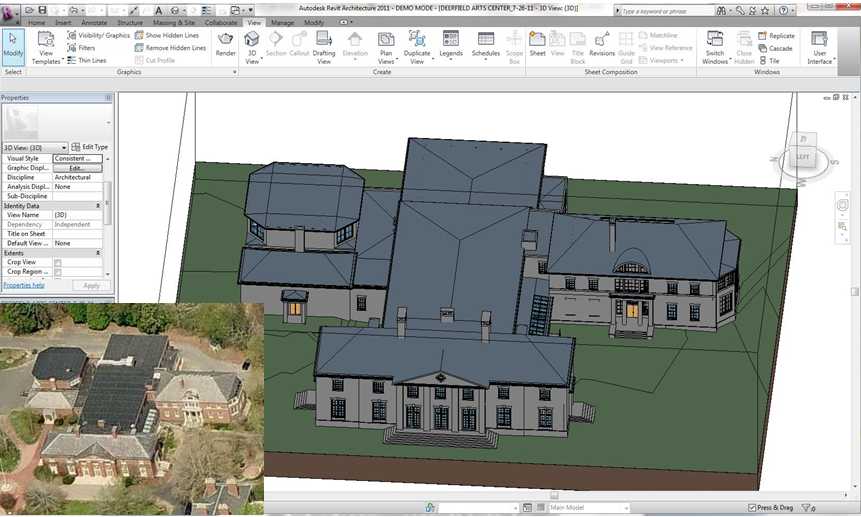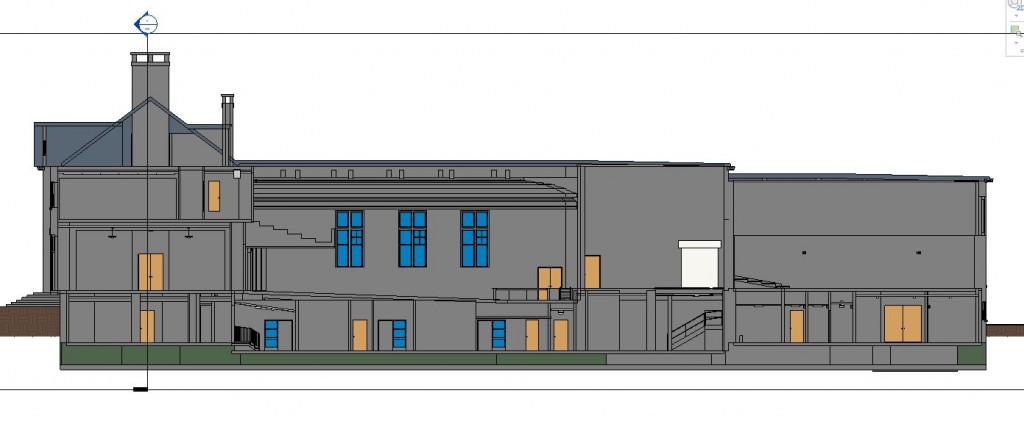Posts Tagged buildings
Top 3 Issues : Revit Models for Existing Buildings
Posted by Jim Foster in BIM, Built Environment, Existing Conditions, Point to Point Laser Technology on January 19, 2016
In my experience through a dozen plus years of the topic, these issues are best discussed and defined at the outset whether you’re outsourcing the work or doing it yourself.
- What is the initial use of the model?
Start with a MVM (Minimal Viable Model ), volumetrically correct and add detail from there. Interior designers will need different detail than someone implementing CAFM tools, then will an architect adding an addition or an adaptive reuse project. Custom windows, Wall Types, Beams, Fire Protection, Molding, etc. can all be added later so don’t pay for what you don’t need.
- What technology is being deployed?
There are a variety of technologies out there, what are you or your vendor using? How much experience do they have. Do not be afraid to ask for or create a technology road map and ask for demonstrations, experience, and documentation of previous projects. Technology and data capture can be and should be quite different for a 1000 rooms in a hotel vs. a theatre with non-orthogonal walls, balconies, and lots of trim detail. Will it be HDLS (HIgh Def laser Scanning), PPLT (Point to Point Laser Technology or P2P), Photogrammetry, Hand measuring and graph paper? There are price considerations to be had with each.
- Architectural Intent?
Hard to believe this makes into the top 3, however, you need to discuss how you want to deal with non-conforming issues. For example, less than a .3 degree deflection of a wall in plan view will cause +6” over 100 feet. Who cares? Do you? It’s important. As non-ortho connections in Revit cause model errors, something in new construction Revit wants you to avoid, however when modeling existing not every building was built perfectly square. Would you rather see the building modeled with regards to architectural intent and have any non conforming issues annotated or do you want it modeled as it exists.
There is a lot of confusion in the marketplace with regards to laser scanning and modeling existing conditions as there are no standards in place, nor certifying boards for anyone doing this work so until that day happens the onus is on the consumer to ask the questions and help manage the process to get the model they need.
Jim
Co- Founder / CEO Pointknown
Pointknown provides services and software for documenting existing buildings in Revit. We also offer consulting to set up your own projects through enabling technology or project management.
Deerfield Academy gets Nailed : PKNail captures existing buildings directly in Revit : BIM
Posted by Jim Foster in As Builts, BIM, Built Environment, Existing Conditions on July 27, 2011
 So we have been working on PKNail for close to forever. Its intent is to capture existing conditions in Revit quicker, easier, better, faster etc. In theory, simple idea. In practice, much tougher. The product was born from my Architectural Services firm, Interioreview and from the need in creating a product/process that creates repeatable results. Have the knowledge in the software rather than with ‘Bob’. PKNail aids someone on the ground capture key data and tie out the model/dimensions on site rather than having to collect data and then sit in front of a computer off site hoping the whole thing goes together right. Using Interioreview as a skunk works to continue testing PKNail in the field to go against real world situations, fine tune features and in general try to break it so it will be rock solid when it hits the field. We have been persistent in our goal. I read somewhere recently that the first 90% takes 75% of the time, the last 10% takes the other 75%: It would not be unfair to put us squarely in the this math challenged adage.
So we have been working on PKNail for close to forever. Its intent is to capture existing conditions in Revit quicker, easier, better, faster etc. In theory, simple idea. In practice, much tougher. The product was born from my Architectural Services firm, Interioreview and from the need in creating a product/process that creates repeatable results. Have the knowledge in the software rather than with ‘Bob’. PKNail aids someone on the ground capture key data and tie out the model/dimensions on site rather than having to collect data and then sit in front of a computer off site hoping the whole thing goes together right. Using Interioreview as a skunk works to continue testing PKNail in the field to go against real world situations, fine tune features and in general try to break it so it will be rock solid when it hits the field. We have been persistent in our goal. I read somewhere recently that the first 90% takes 75% of the time, the last 10% takes the other 75%: It would not be unfair to put us squarely in the this math challenged adage.
Until recently when using PKNail in the field we also used products/techniques side by side to capture the same information. This was so we can compare results and make certain we never get hung up. However, I am proud to say we started and completed a complex project using only PKNail in the field to capture the majority of structure, walls (exterior/interior partioning/etc.) windows, doors, etc. PKNail allows a user to communicate/drive Revit wirelessly through a bluetooth enabled range finder. That is, press a button to measure a wall, take measurement, press another button and the wall gets built in Revit, add a window, door same things, move room to room, floor to floor. Can it help you put in complex gutter or roof sweeps? No. Can it it help you knock out structure and jump start your project, you bet.
The Deerfield Academy Arts Center is a series of interconnected building design/built over the past century. Incorporated into the strucutre is an Art Gallery, Theatre, Studios, Auditorium, Architecture Studio, etc. PKNail was used to capture the shell/exterior of the building and then used to move inside the structure to capture all the wall partioning, doors, etc. The exterior detail was modeled back in our office from field data, like stone work, exact window profiles and roofs.
3D from Photographs : #BIM #3D
Posted by Jim Foster in 3D, BIM, Built Environment on February 23, 2010
The world wants an easier way to get 3D. Photographic manipulation has been around for awhile. I remember sitting in a presentation by Yonald Chery for Mok3 which created photo immersive 3D, and this was back in 2004. The technology is still used today in something called supertour. A quote from 2004 at the time-
“This Mok3 thing could be bigger than SketchUp, especially for interior designers and architects,” Geoffrey Moore Langdon tells me. “It is like a PhotoShop that allows you to push-pull the images into correct 3D with the ease of SketchUp. Thus from a single photograph, you quickly create a 3D model:
It was ahead of its time, but we are seeing more entrants into the field. Autodesk acquired RealVIZ and its Image Modeler software, you can view a demo here. And today in the NY Times today there is the article Computers Turn Flat Photos into 3-D Buildings. Where they are using a crowd sourcing/social media aspect to data collection and improving the algorithms to stitch this stuff together. A project out of Cornell and University of Washington morphed into Microsoft’s Photosynth where you can view 3D images that have been stitched into “quasi 3D” through a browser. However, Photosynth appears to be limited by the number of photographs and data so the bigger desire was to scale this thing. So the same folks have been crunching more numbers and algorithms to create a more robust platform and a web site called Photocity was created entice people to add data and create the digital 3D construction of the WORLD, okay maybe not the world but then again…




